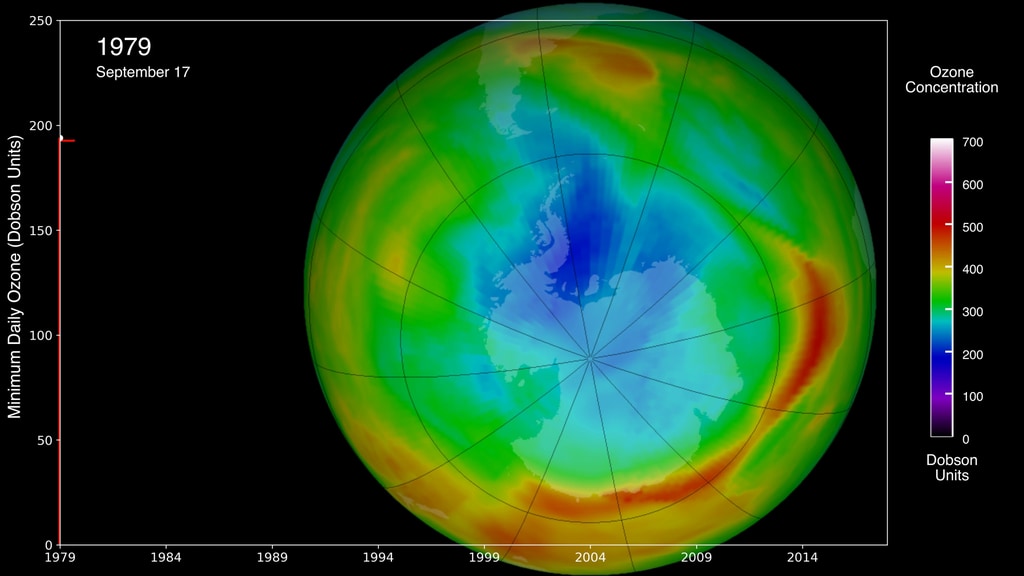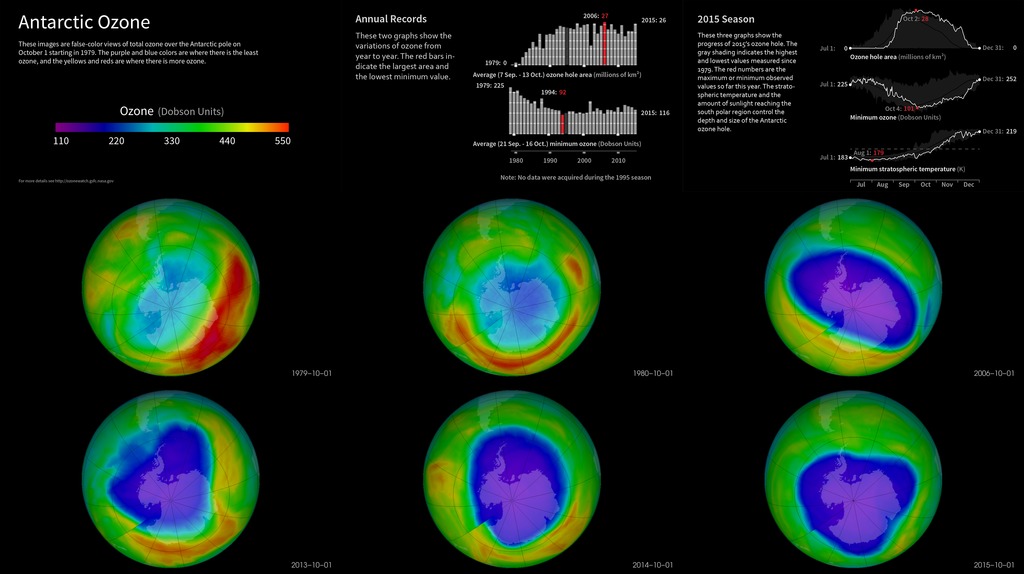The Antarctic Ozone Hole Will Recover

October average minimum ozone over Antarctica
Ozone is Earth’s natural sunscreen, shielding life from dangerous solar ultraviolet radiation. Human-produced chemicals in our atmosphere—such as chlorofluorocarbons (CFCs), used for many years as refrigerants and in aerosol spray cans—have depleted the Earth’s ozone layer. Scientists first recognized the potential for harmful effects of CFCs on ozone in the early 1970s. In the 1980s, governments around the world woke up to the destruction of the ozone layer and in 1987 negotiated the Montreal Protocol—an international treaty designed to protect the ozone layer by banning CFCs and similar ozone-depleting chemicals.
Since the mid-1990s, global ozone levels have become relatively stable. In fact, because of the Montreal Protocol, model simulations suggest the size of the hole should return to its pre-1980 levels by about 2075. Here, the four globes show monthly-averaged total ozone over Antarctica in October. The 1971 and 2017 globes were created with data from NASA’s Nimbus-4 Backscatter Ultraviolet instrument and Aura’s Ozone Monitoring Instrument, respectively. The 2041 and 2076 globes were made using output from the NASA Goddard Earth Observing System Chemistry-Climate Model, or GEOS-CCM. The graph shows each year’s October average minimum (white dots) over Antarctica. The red curve represents a smoothed version of the white dots.
For More Information
Credits
Please give credit for this item to:
NASA's Goddard Space Flight Center
Figure produced by Eric R. Nash, NASA/GSFC SSAI and Paul A. Newman, NASA/GSFC, Ozone Hole Watch
-
Animator
- Amy Moran (Global Science and Technology, Inc.)
-
Scientists
- Paul Newman (NASA/GSFC)
- Eric Nash (SSAI)
- Susan Strahan (USRA)
- Luke Oman (NASA/GSFC)
-
Writer
- Heather Hanson (Global Science and Technology, Inc.)
Release date
This page was originally published on Thursday, June 4, 2015.
This page was last updated on Sunday, October 13, 2024 at 12:26 AM EDT.


